Top on the list of tourist attractions for many Americans visiting Dublin is the Famine Memorial near the Custom House, a heartbreaking and poignant work that reflects the most tragic period in Irish history that changed the country forever.
But what exactly is the Famine Memorial in Dublin? We look at the story and history behind it and why it's so important.
What is the Famine Memorial in Dublin, Ireland?
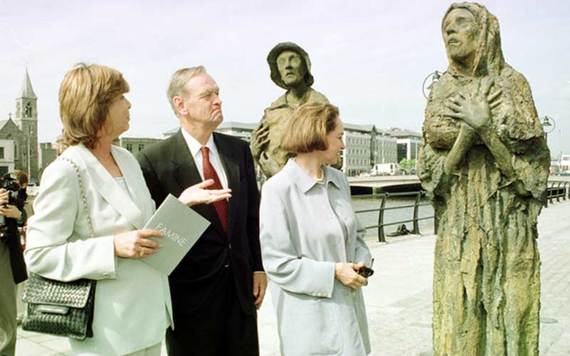
Nora Smurfit at the memorial. Image: RollingNews.ie
The Famine Memorial in Dublin Ireland is a collection of statues designed and crafted by Dublin sculptor Rowan Gillespie and presented to the city of Dublin in 1997.
The statues depict the starving Irish people walking towards ships to bring them overseas to escape the hunger and poverty of the Irish famine; the women, men, and children shown in the memorial as skeletal figures wearing nothing more than rags.
“Famine” (1997) was commissioned by Norma Smurfit and is a commemorative work dedicated to those Irish people forced to emigrate during the 19th-century Irish Famine.
What is the Famine Memorial in Dublin’s history?
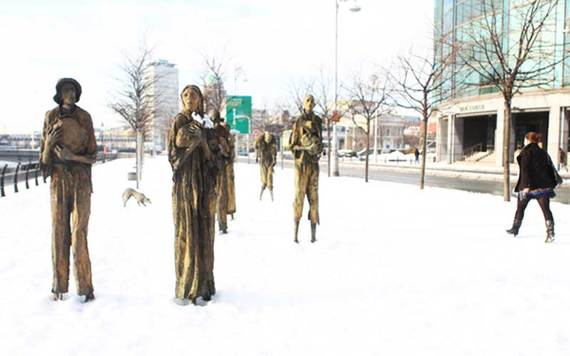
The memorial in the snow. Image: RollingNews.ie
In 1840s Ireland, many of the country’s poor population had come to rely on the potato in their diet. In 1845, however, a late blight caused by the water mold Phytophthora infestans is believed to have been accidentally imported from North America and began to appear throughout the country’s potato crops. The first year only saw partial crop failure but the returning blight from 1846 to 1849 resulted in the nation’s potato crops being almost completely destroyed.
With the potato crop destroyed, the Irish suffered years of mismanagement and mistreatment from their colonial power, England, which saw other food products shipped off the island while the people there remained starving. Little else was done to protect the Irish people from hunger and as a result, a million and a half people died and a further million emigrated from the country.
The lack of aid from the British during this time has led some to question whether it can, in fact, be called a famine, although many of the main historians specializing in the area continue to call the dark period of Irish history "the Irish famine" or "the Great Hunger."
In an attempt to commemorate a tragic event that changed Ireland forever, memorials such as this one in Dublin have been established around the world, often depicting Irish figures traveling toward emigration or the ship that carried them there.
What is the Famine Memorial in Dublin, Ireland’s location, and address?
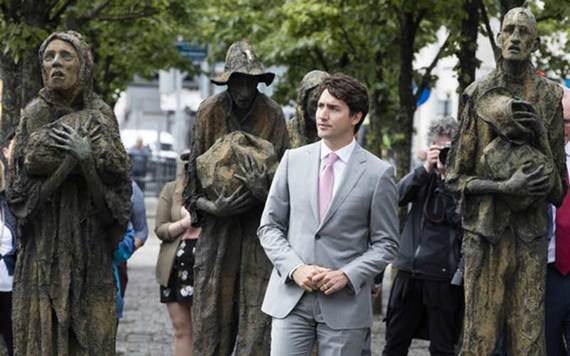
Justin Trudeau, Canadian Prime Minister, at the memorial. Image: RollingNews.ie
The Famine Memorial in Dublin is located on Custom House Quay in the Dublin Docklands. Its address is the North Dock, Dublin, Ireland.
This location of “Famine” within Dublin is particularly appropriate and historic as one of the first voyages of the Famine period was on the “Perseverance,” which sailed from Custom House Quay on St. Patrick's Day 1846.
The crew and 210 passengers captained by Captain William Scott, a 74-year-old native of the Shetland Isles, all arrived safely in New York on May 18, 1846. This is a tale of survival very different from that of the further ships which left Ireland for America, which came to be branded “coffin ships” because of the death and disease suffered by those who traveled aboard.
The ships were so named because the brutal passage aboard these ill-equipped vessels often meant death for passengers. The coffin ships ferried some 1.5 million Irish to North America during the later years of the 1840s as they fled famine and poverty in their native isle. With a further million dying of hunger in Ireland, Irish of all ages took their chances on passage to Canada or the United States in a quest /for refuge.
In June 2007, the second series of famine sculptures by Rowan Gillespie was unveiled by President Mary McAleese on the quayside in Toronto's Ireland Park to remember the arrival of Irish famine refugees in Canada.
Just a few steps away from the sculpture on the Quays is also a tall ship moored in the water that is set up as a famine museum. The Jeanie Johnston is a replica famine boat and is more than a fitting backdrop to the memorial statues.
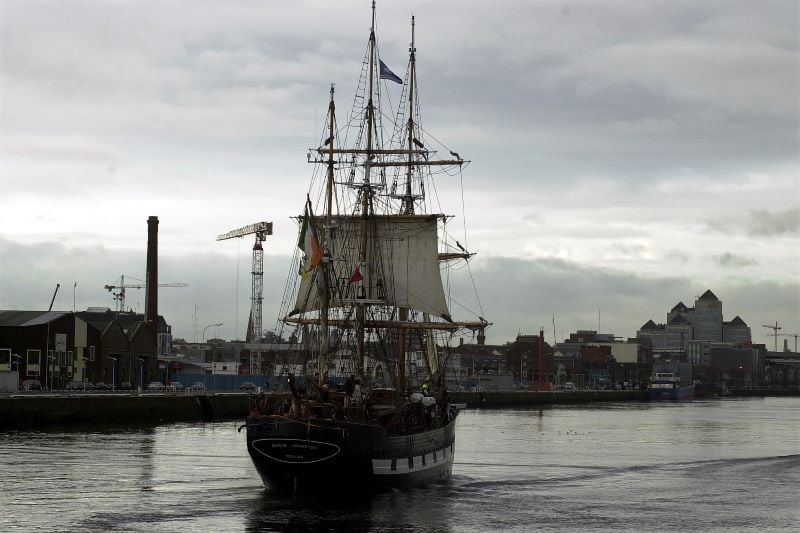
November 2003: The Jeanie Johnston, replica of a 19th Famine Ship, arrives into Dublin Docklands. (RollingNews.ie)
Images of the Famine Memorial in Dublin:
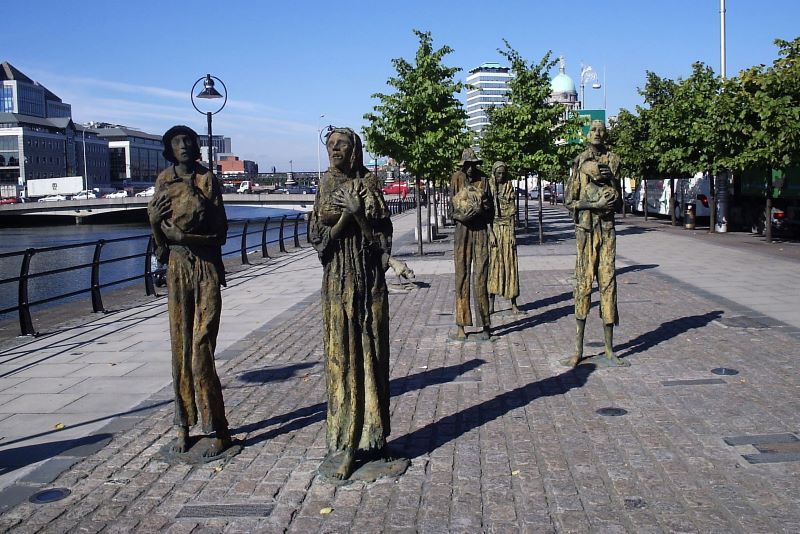
The Famine Memorial in Dublin. (Public Domain / Sebb)
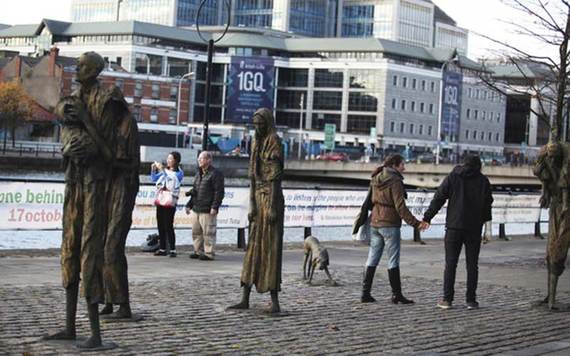
Image: RollingNews.ie
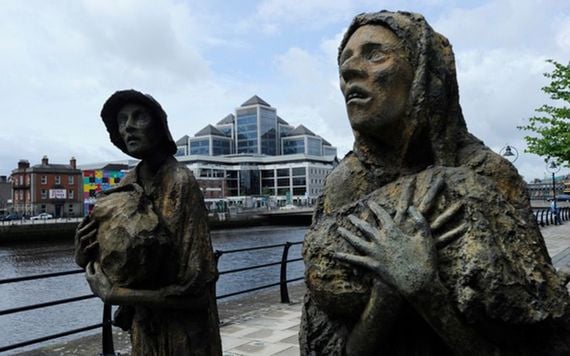
Image: RollingNews.ie
Have you visited the Famine Memorial in Dublin? Is there a Famine Memorial in your own city? Let us know in the comments section, below.

Are you planning a vacation in Ireland? Looking for advice or want to share some great memories? Join our Irish travel Facebook group.
*Originally published in September 2022. Updated in January 2024.
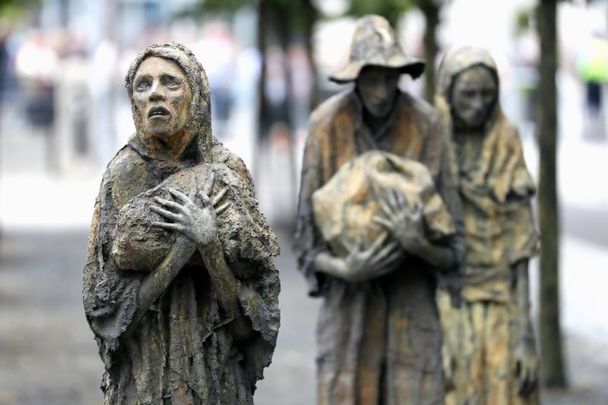
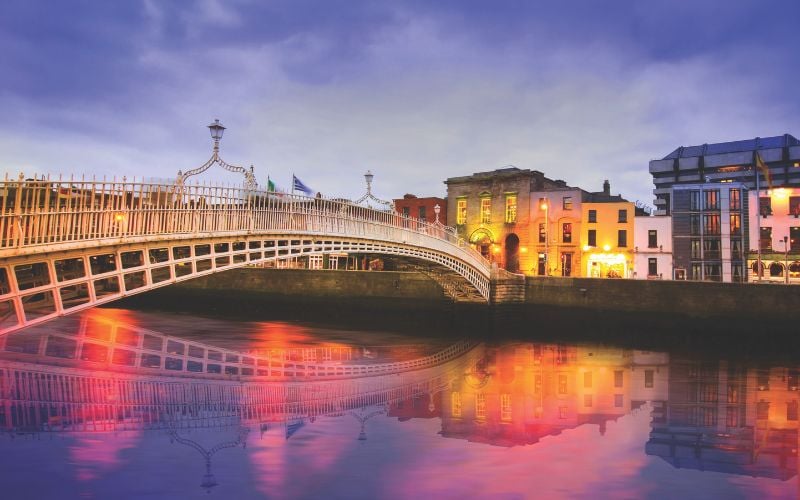


Comments